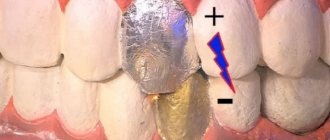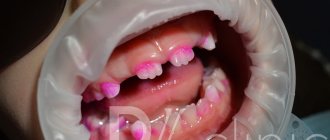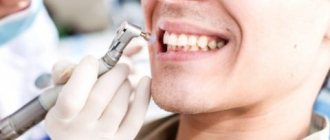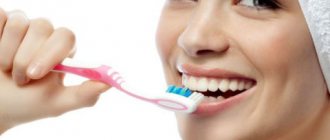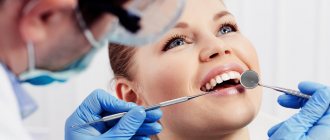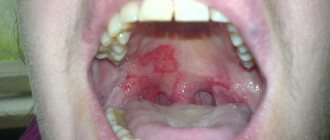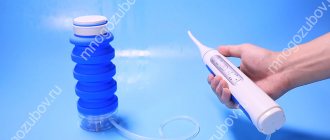The human oral cavity is home to a huge number of different microorganisms. They settle on the teeth, gums, tongue and buccal mucosa. Colonies of microbes and their metabolic products lead to a number of dental problems. In addition, when bacteria enter the body, they provoke the development of gastrointestinal pathology.
To balance the ecosystem and improve overall health, regular and high-quality oral hygiene is necessary. The high effectiveness of such a procedure depends on the correctness of its implementation and some other nuances.
Why is oral hygiene necessary?
The importance of oral hygiene lies in the prevention of major dental diseases, as well as maintaining an attractive appearance of a person. By following the rules for conducting events, you can achieve significant results, including:
- formation of strong teeth;
- destruction of pathogenic microflora;
- prevention of the development of caries and periodontal disease;
- prevention of infectious diseases of the oral cavity and gastrointestinal tract;
- snow-white smile;
- fresh breath;
- savings on dental services.
As medical practice has shown, people with weakened immune systems and smokers are especially in dire need of hygienic care.
Types of oral hygiene
To maintain the microflora of the oral cavity, in which the teeth and oral mucosa will always be healthy and aesthetically pleasing, there are a number of hygiene measures. They are divided into two main types: personal hygiene and professional procedures.
In the first case, oral care is carried out independently at home. According to the recommendations of dentists, the procedure should begin at an early age, when children have their first teeth.
If cleaning the mouth at home does not bring the desired result, the second method is used. Professional cleaning is carried out in a medical institution by a dentist.
Each method requires compliance with a number of rules. Therefore, in order for the procedures to be highly effective, it is necessary to familiarize yourself with them in more detail.
Scaling - procedure progress
Before removing subgingival calculus, it is necessary to remove supragingival calculus. If there is subgingival tartar on more than one tooth, it may be necessary to spread the cleaning over several visits (usually up to 8 teeth are cleaned in one visit).
- The doctor will clean your teeth and gums with hydrogen peroxide.
- A surface anesthetic (in the form of a spray) can be used to reduce discomfort during peeling.
- Subgingival scaling can be performed with hand instruments (called curettes) or ultrasonic tips.
The advantages of ultrasonic methods in the case of supragingival tartar removal are described.
Rules for carrying out hygiene procedures
In order for your personal oral hygiene to ensure thorough cleaning and create an attractive smile, you must purchase special cleaning products in advance and then follow the rules of the event.
Accessories for the procedure
Oral care is usually carried out using special cleaning products, including:
- Toothbrush for cleaning teeth, cheeks, tongue.
- Toothpaste for the prevention and treatment of diseases.
- Brushes for removing food residues in interdental crevices.
- Rinse to complete the procedure.
When it is not possible to brush your teeth, dental floss is used. To eliminate bad breath and small food particles after eating, it is recommended to use sugar-free chewing gum.
Rules for cleaning teeth
Oral hygiene rules depend on the choice of cleaning product. Using a toothbrush, the procedure is carried out as follows:
- The cleaning attribute is rinsed with running water.
- Apply a small amount of toothpaste to the bristly surface of the brush.
- At an angle of 45 degrees relative to the gum, the attribute is located in the open mouth.
- The upper teeth are cleaned from top to bottom using smooth, circular movements.
- The lower jaw is cleaned from bottom to top.
The above manipulations are carried out within 3 minutes. After this time, the toothbrush is turned over and the tongue is cleaned with a rubber nozzle. At the end of the procedure, the oral cavity is rinsed with warm water or a special rinsing solution.
When using dental floss, proper oral hygiene is carried out in the following order:
- For a one-time procedure, dental floss 40-50 cm long is cut.
- The thread seeps into the interdental crevices with smooth movements.
- Having reached the surface of the gum, the thread is directed in the opposite direction in a similar way without sudden movements.
Having cleaned one interdental gap in this way, move on to another. In this case, the thread must be clean for each section.
If the above hygiene measures do not get rid of plaque deposits on the teeth, dentists recommend professional cleaning.
Indications and contraindications
It is advisable for everyone, without exception, to conduct professional oral hygiene once every six months. Timely removal of plaque helps prevent the development of more serious pathologies.
On this topic
- Hygiene
Debunking 10 popular myths about teeth
- Maria Konstantinovna Tevs
- March 22, 2020
Among the main indications requiring immediate contact with a specialist are:
- bad breath that does not disappear even after brushing your teeth;
- subgingival formations;
- tartar and plaque;
- swelling of the gum tissue;
- presence of crowns and implants;
- periodic bleeding of the gums;
- prevention of carious lesions;
- desire to whiten teeth;
- fluoride therapy in the near future.
Despite the high effectiveness of professional cleaning, it cannot always be used. Experts identify some contraindications that make this procedure impossible.
These include:
- diseases of an infectious and viral nature, for example, HIV, AIDS, hepatitis C and B;
- diseases of the respiratory system;
- injury to the oral mucosa;
- pathologies of teeth and gums with an acute form of the course;
- any violations of internal systems and organs;
- blood diseases and poor circulation.
On this topic
- Hygiene
All about how to take care of your dental health
- Maria Konstantinovna Tevs
- October 4, 2020
In addition, special attention should be paid to the choice of the method by which teeth will be cleaned in the following conditions:
- during pregnancy and lactation;
- in childhood ;
- with thinning and increased sensitivity of the enamel surface;
- if there is a tendency to develop an allergic reaction;
- in case of diagnosing stomatitis, gingivitis or periodontal disease.
In these cases, you must first eliminate the underlying problem or choose a more gentle cleaning.
Carrying out professional cleaning
Oral hygiene with professional help is carried out to eliminate accumulations of soft plaque, which over time develops into tartar. When a hard stone forms, a person loses his attractive appearance. In addition, against the background of this pathology, concomitant dental diseases develop.
To prevent these negative phenomena, the dental hygienist prescribes measures using medical instruments and special equipment.
Rules for preliminary examination
Before proceeding with professional intervention, the dentist must first carefully examine the patient. Medical methods of oral hygiene depend on the following diagnostic indicators: caries intensity index, hygienic index, assessment of the condition of the mucous membrane, type of bite, and the presence of dental pathologies.
After assessing the condition of the oral cavity, the specialist must form a responsible attitude towards the prescribed procedure in the patient. It is important that a person understands that medical oral hygiene can completely get rid of periodontal disease and improve the external condition of teeth.
Carrying out procedures
A medical complex of measures to remove persistent dental tumors can be carried out therapeutically, orthodontically or surgically. Each event is conducted by a dentist in a medical office.
In order for professional oral hygiene to go smoothly, before it begins, the patient is prescribed rinsing the nasopharynx with an antiseptic solution.
For major operations, anesthetic medications may be used, in the form of sprays or injections. The professional cleaning complex includes several stages.
Removing plaque and tartar . An ultrasonic device is used for this. In some cases, manual mechanical cleaning with dental instruments is used.
Removing pigmented plaque. A popular device for cleaning teeth from soft plaque is the AirFlow device. As a result of the pressure of the emitted water, air and soda, the enamel becomes lighter by 2 shades.
Polishing teeth . This method uses professional products that contain zirconium microparticles.
Fluoridation . This method involves strengthening the enamel with fluoride-containing gel trays. The procedure lasts only a minute, but during this time the enamel has time to become saturated with fluoride ions, due to which it becomes stronger.
Fissure sealing . This method involves using composite resins to fill the grooves of the teeth on the chewing side using a special tool.
Many patients neglect professional procedures, as well as the visit to the dentist itself. However, this position is fundamentally wrong.
By contacting a specialist in a timely manner, you can avoid dangerous pathologies of the oral cavity, as well as receive recommendations for daily care so that individual oral hygiene brings significant benefits.
Scaling - what is it?
Supragingival scaling is performed using hand instruments: sickles, rippers and curettes. Ultrasonic and sound systems can also be used. When using ultrasonic tips, the doctor should avoid scraping, replacing them with a gentle movement of the tip over the surface of the tooth.
Removing stones using ultrasonic devices has its advantages. These include:
- Shorter treatment time (up to 50% compared to removing tartar with hand instruments).
- Does not damage the root surface.
- Better access.
- Killing bacteria using a phenomenon called acoustic phenomenon (the walls of bacterial cells are destroyed by ultrasound).
- Additional cleaning of the root surface due to the oxidative effect (the phenomenon of cavitation is used here - that is, the rapid transformation of the liquid phase into gas).
Each descaling should be completed by thoroughly smoothing the cleaned surfaces. Skipping this step causes tartar to accumulate faster on rough areas and irritate the tongue and cheeks.
It is worth noting that, for example, toothpastes used for final polishing of teeth contain fluoride or hydroxyapatite (the main component of hard dental tissues), which close open dentinal tubules and prevent hypersensitivity after the procedure.
It involves removing subgingival calculus and dead root cement contaminated with bacterial toxins. The surface of the root and neck of the tooth is then smoothed to prevent the deposition of new bacterial plaque.
About
Recommendations for oral hygiene
In medical practice, there are certain rules for the technique of cleaning the mouth. Compliance with them does not require much effort or difficulty.
Oral hygiene recommendations from experts:
- To maintain the microflora in the mouth and the strength of the teeth, it is necessary to follow a balanced diet of dairy and legumes.
- To brush your teeth, it is better to choose a brush with synthetic bristles.
- The cleaning attribute should be replaced every 3-4 months.
- Clean your mouth with a toothbrush and toothpaste 2 times a day. The first procedure is carried out in the morning, the second before bedtime.
- Various oral hygiene practices should include cleaning the tongue and gums. This will be a good means of preventing periodontal disease.
- After each procedure, the toothbrush must be thoroughly rinsed with running water.
- It is recommended to clean the spaces between teeth after every meal. To do this, you can use dental floss or special wooden sticks.
- It is better to entrust the monitoring of the condition of the oral cavity to the dentist.
- Professional hygiene should be carried out 1-2 times a year by a qualified specialist.
- For hard-to-reach areas of the mouth, it is advisable to purchase specialized tools, such as a brush and floss.
- Don't neglect mouthwashes either. Their regular use contributes not only to fresh breath, but also to the strength of the enamel structure.
It is recommended to explain the rules of oral care to a child from an early age. In this case, the cleaning procedure will become an integral part of a person’s life, which will significantly reduce the risk of pathologies in the oral cavity.
How does professional cleaning happen in the doctor's chair?
Hygienists have several professional teeth cleaning tools at their disposal. One of these tools using Air Flow
. This is a device that promotes hygiene with the help of a fine sand-like abrasive placed in this device, that is, it cleans the teeth and the surface of the teeth from soft and hard stone. I do my own oral hygiene this way - I like it. Air Flow is more gentle and gentle. And if you work with four hands with an assistant, it is very convenient for the patient.
But ideally, to ensure proper dental hygiene, you need to use the entire range of tools that exist.
In addition to Air Flow, there is also ultrasound - an ultrasonic scaler.
This is an attachment that is installed on the scaler itself.
Ultrasonic movements help remove hard plaque.
How to remove tartar in hard-to-reach places
In addition to ultrasound, there is mechanical cleaning using a Gracie curette
. This is a special instrument designed to do mechanical cleaning and hygiene began with these curettes.
Curettes are a handle with a working part on each side. The working part is a sharp edge. The angles of inclination on one side of the curette and on the other are different. The curette is convenient to work on both the upper and lower jaws. That is, it is convenient to get to - easy access.
An American housewife invented curettes. Part of the plaque is removed mechanically and then polished using a soft brush and paste. Great practical feminine approach, isn't it?
PS
Visiting the dentist twice a year was invented back in the Soviet Union under Soviet healthcare, and it was actually considered one of the best, by the way.
Consequences of neglecting hygiene rules
Failure to comply with the rules of oral hygiene, at best, will lead to bad breath and the development of caries. But, as medical practice has shown, such neglect will have more serious consequences.
A large accumulation of harmful bacteria in the absence of hygiene procedures or their improper implementation contributes to the development of the following pathologies:
- Gingivitis. This is an inflammatory process of the gums that affects the alveolar process of the jaw. The pathology is accompanied by putrid breath, bleeding gums when brushing teeth individually, itching and a negative perception of the taste of food.
- Candidiasis . This inflammatory process develops when Candida bacteria enter the mouth. In pathology, swelling of the oropharynx and a white coating on the tongue are observed. In an advanced form of the disease, erosions may appear on the surface of the oral mucosa.
- Periodontitis. This pathology affects periodontal tissue. Symptoms of periodontitis include the formation of hard stone, tooth mobility, and the presence of purulent or serous discharge.
- Stomatitis. Such damage to the lining of the mouth occurs due to the proliferation of infectious microorganisms. When bacteria enter the human body, they destroy the surface structure of the gums, tongue and cheeks. Subsequently, ulcers appear on the affected areas.
As you can see, each pathology develops due to the entry of harmful bacteria into the oral cavity, where there is an optimal habitat for their growth and reproduction. Only careful daily oral care can correct this phenomenon.
Following the recommendations of specialists for individual procedures, as well as regular visits to the dentist, will help maintain a clean and healthy mouth, as well as provide fresh breath and a snow-white smile.

